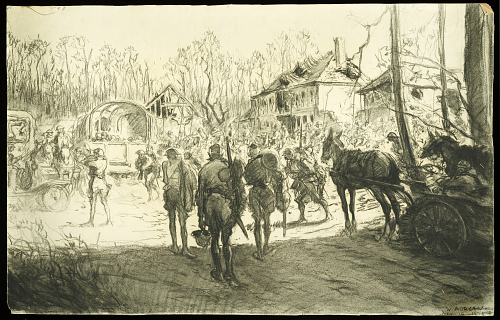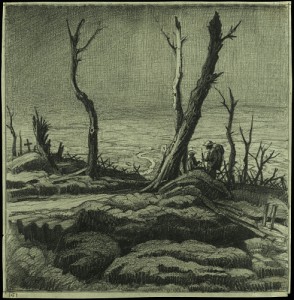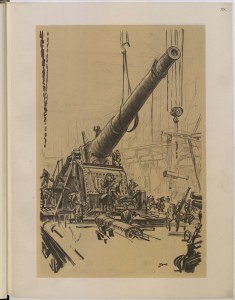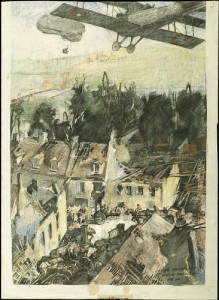As the world spends today remembering those who have fallen defending their country, we thought we would share this fascinating and timely article published in August by Smithsonian Magazine.
In his article “This Riveting Art From the Front Lines of World War I Has Gone Largely Unseen for Decades,” Max Kutner reveals the history of American artists sent by the government “to capture the true essence of war.”
“Throughout 1918, prior to the war’s end in November, the artists produced some 700 works, ranging from charcoal sketches to completed ink or watercolor compositions. Bart Hacker, a curator at the National Museum of American History, says the artists depicted four types of scenes: soldier life (washing up, meal time); combat, aftermaths of war (destroyed churches, devastated fields); and technology. In one image, wounded men carry the fallen through trenches and barbed wire. In another, soldiers on horseback travel through a destroyed French village. Notably, Hacker says, the artists did not depict dead bodies.”
Though the art shows honest and powerful depictions of the war, they have not been featured in their own exhibition since the 1950s. But things are changing, though. As Kutner notes, the Smithsonian has just digitized this entire collection, and you can look at it here.

Photo courtesy Smithsonian Institute.

Photo courtesy of Smithsonian Institute.
Kutner notes that America was not the first nation to send artists to the front lines. In fact, Paul Gough of the British Library writes that Germany, France, Belgium and England documented war in this way in his article, “Why Paint War?”
“Gisbert Combaz was a Belgian doctor of law, an artist and professor in the decorative arts. On 25 August 1914 German soldiers burnt down the city of Leuven after killing hundreds of civilians. In highly graphic detail Combaz described the population fleeing from the city with flames visible in the background of the drawing. Other Belgian artists drew upon second-hand accounts to conjure up images of the impact of war.”]


Photo courtesy Smithsonian Institute.







